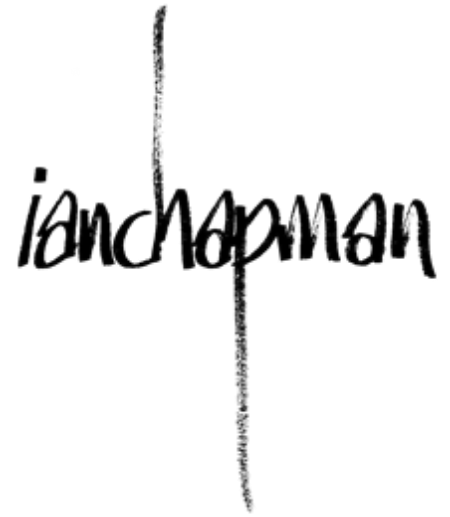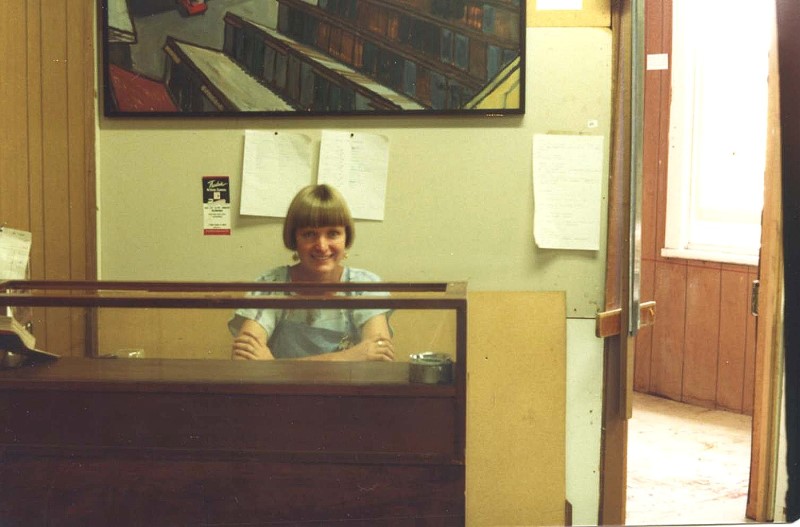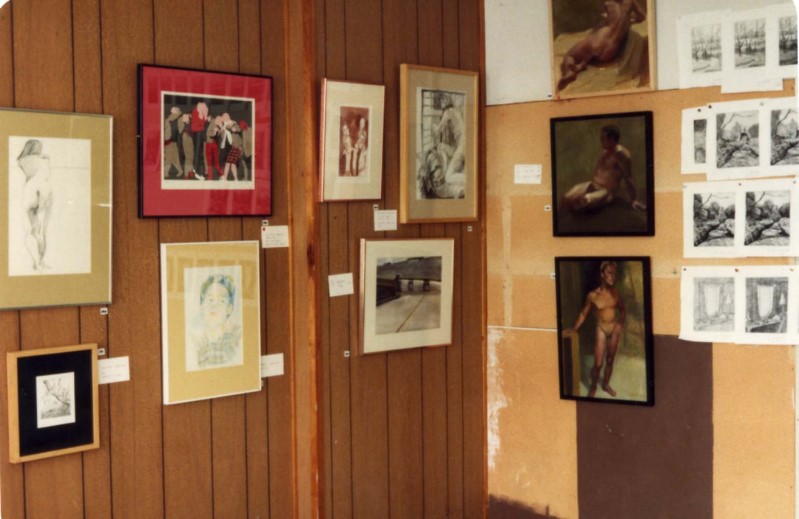Biography
History
1966 - Fishing with Alan McGrath
1964 Balgowlah High Rugby 1st XV
"Best & Fairest".
Since childhood I have been a ‘maker’, exploring the character of materials, working them to create objects artistic or utilitarian. Painting and drawing were instinctive components of my innate trammel between my eye, imagination, hand and creation. My creativity survived through high school at a time when the curriculum didn’t include Art, and manual subjects were debased as fit only for low achievers. In my own time I made canoes, surfboards, fishing gear, designed and sewed clothes and leather goods, and experimented with cooking in my Mum’s kitchen. I threw myself into sport and rugby for which I discovered I had a talent and which gave me status at a sport-mad high school despite my low marks.
Convinced by my mother that my scholastic underachievement was shaming myself and the family, I focused on study for a year, matriculating to the University of New South Wales to study Architecture. This seemed to be an amalgam of my visual creativity and dubious academic ability. I did little painting but escaped into rugby and fishing. I paid my way through my studies by laboring on building sites, driving for a mining company and as a taxi driver. I survived four unhappy years at university before I had enough courage to face my family and leave.
With time on my hands I started to paint and draw again. I had learnt the basics of watercolour for architectural illustration and began to sell small paintings door to door. Despite good sales and money in my pocket and an initial flush of satisfaction, my critical perceptions soon outstripped my abilities and I realised I needed to learn more. I read art books voraciously but it was obvious that to master drawing the human figure you need to study from the figure. After a couple of false starts I enrolled in the Julian Ashton Art School, Sydney.
First trip to Paris - repairing my R4
I was in heaven! Surrounded by kindred spirits for the first time, I knew what I wanted to do with my life. From that point on painting and drawing have given me my main creative challenges and rewards. I continue to make and build but art is my main stream.
I threw myself into study at the Ashton’s school for three years and was awarded the school prizes for painting and drawing. Then followed a year in London studying painting and etching at the City and Guild School and a year in Paris etching with William Hayter at Atelier17 and working in museums. My sejour in Paris created an affection for France’s art and culture and I now return frequently to paint and exhibit.
My greatest influences come from western painters of the 16th to early 20th centuries and find special resonances with Degas , Lautrec, Bruegel , Bonnard, Klimt and Van Gogh. My subjects are from life and generally come from a visual memory and a motif observed, rather than an idea verbally conceived. I have broad interests and experience . My work reflects this. I paint whatever interests me. I have no time for placing myself in the philosophical fabric of art discourse. I leave that to those who have more interest in words than in paint.
Activities
Lee Street Studios
In 1980 I established a studio complex on the 5th floor of an old building in Lee Street, Sydney, near Central Railway. As the previous tenant left behind a wealth of unwanted building material, I was able to rapidly construct partitions for seven individual studios, an etching workshop and a large common area. I held classes in the common area and etching studio, and mounted group exhibitions with the other painters. The studio ran with great success until the building was sold and property developers forced us out.
\
Composition class with Peter Dorahy
Landscape classes
The Studio
In 1985 I was fortunate to purchase very cheaply, a derelict building in Newtown, Sydney. Originally stables, then a plumbers' store and light aircraft workshop, I used my architectural experience to design a studio and residence within the existing shell. Like many young artists, I had little money so utilised mainly second hand materials, and, thanks to my experience in the building trade, was able to do most of the work myself. I live and work there still.
Etching Presses
When I returned to Australia from Europe in 1977 I was keen to start etching but could not afford to buy a press, so I made one. I did this by converting an old clothes mangle. I passed it on to a friend and, when last heard of in 2010, this press was still printing editions.
The first press I made.
I found my second press in a junk yard. Originally, it was designed to roll lead ingots into sheets. I adapted it by having larger rollers machined and designed a frame for the print bed.
The second 'junk yard' press
My third press belonged to Rose Lindsay. On it she printed all the etchings of her husband, Norman Lindsay. It had been bequeathed to the Julian Ashton Art School but they had insufficient space to use it. This beautiful well worn machine served in my studio for many years. When Paul Delprat, Principal of the Ashton school, decided the press should be returned to the Lindsay museum at Springwood, I was given the task of restoring it by the National Trust. This entailed resurfacing rollers, regrinding the bed and reconditioning the bearings. I finally reinstalled the press, completely restored, onto its original footings in Rose’s Springwood print room.
Restoring Rose Lindsay's press at Springwood















